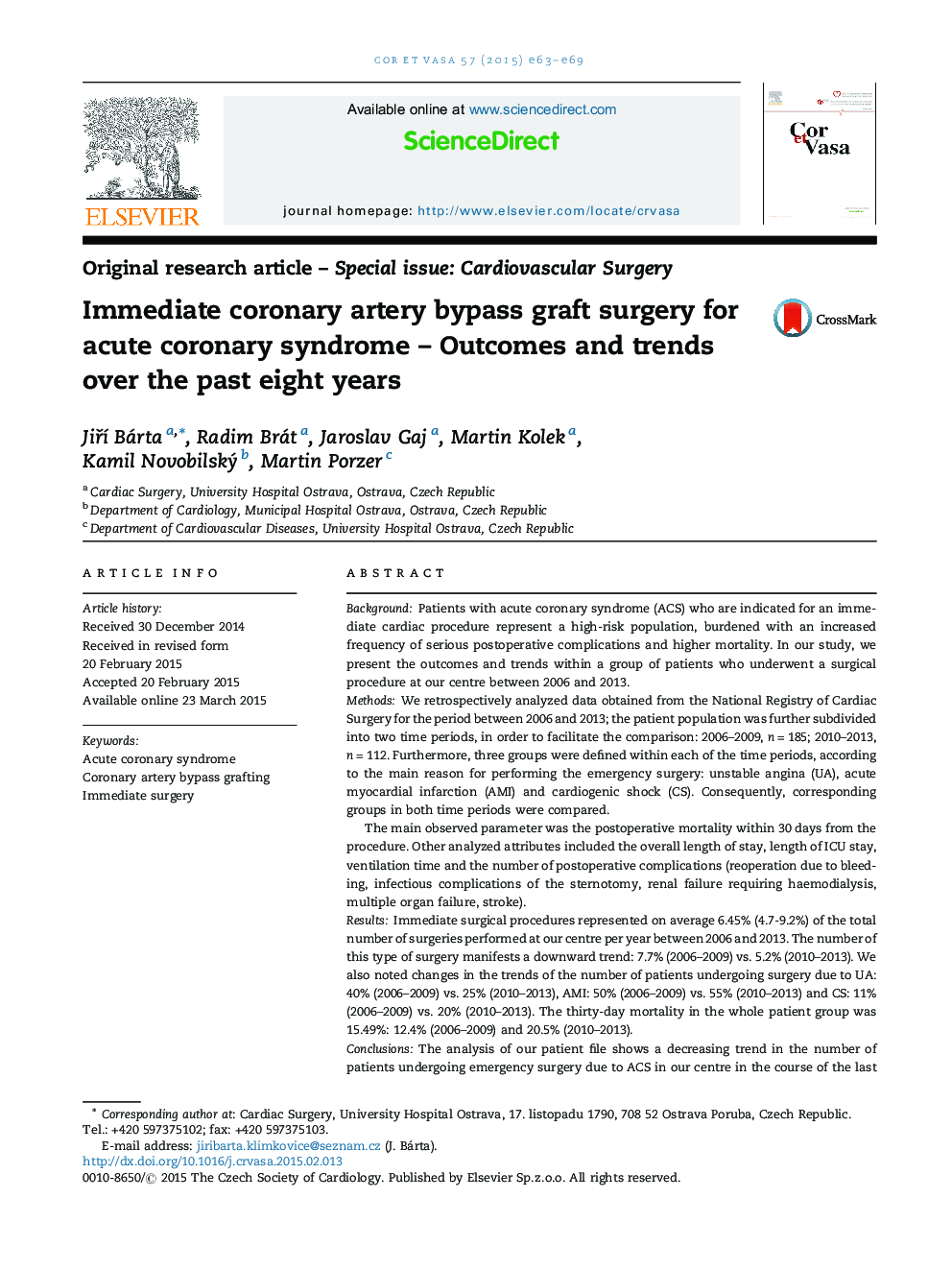| Article ID | Journal | Published Year | Pages | File Type |
|---|---|---|---|---|
| 2728388 | Cor et Vasa | 2015 | 7 Pages |
BackgroundPatients with acute coronary syndrome (ACS) who are indicated for an immediate cardiac procedure represent a high-risk population, burdened with an increased frequency of serious postoperative complications and higher mortality. In our study, we present the outcomes and trends within a group of patients who underwent a surgical procedure at our centre between 2006 and 2013.MethodsWe retrospectively analyzed data obtained from the National Registry of Cardiac Surgery for the period between 2006 and 2013; the patient population was further subdivided into two time periods, in order to facilitate the comparison: 2006–2009, n = 185; 2010–2013, n = 112. Furthermore, three groups were defined within each of the time periods, according to the main reason for performing the emergency surgery: unstable angina (UA), acute myocardial infarction (AMI) and cardiogenic shock (CS). Consequently, corresponding groups in both time periods were compared.The main observed parameter was the postoperative mortality within 30 days from the procedure. Other analyzed attributes included the overall length of stay, length of ICU stay, ventilation time and the number of postoperative complications (reoperation due to bleeding, infectious complications of the sternotomy, renal failure requiring haemodialysis, multiple organ failure, stroke).ResultsImmediate surgical procedures represented on average 6.45% (4.7-9.2%) of the total number of surgeries performed at our centre per year between 2006 and 2013. The number of this type of surgery manifests a downward trend: 7.7% (2006–2009) vs. 5.2% (2010–2013). We also noted changes in the trends of the number of patients undergoing surgery due to UA: 40% (2006–2009) vs. 25% (2010–2013), AMI: 50% (2006–2009) vs. 55% (2010–2013) and CS: 11% (2006–2009) vs. 20% (2010–2013). The thirty-day mortality in the whole patient group was 15.49%: 12.4% (2006–2009) and 20.5% (2010–2013).ConclusionsThe analysis of our patient file shows a decreasing trend in the number of patients undergoing emergency surgery due to ACS in our centre in the course of the last eight years. Between 2010 and 2013, the proportional representation of patients undergoing surgery due to UA decreased, while the percentage of patients undergoing surgery due to AMI and CS increased. Within the population of patients with ACS, we were also able to determine an increased frequency of some risk factors and increased thirty-day mortality among patients undergoing surgery.
